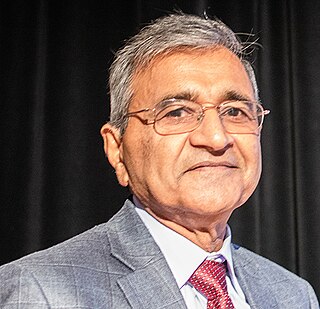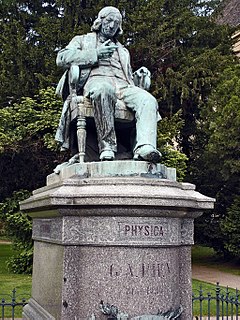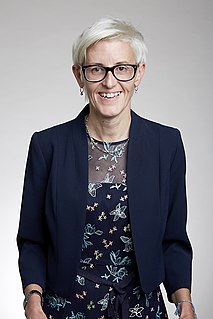 W
WGuillaume Amontons was a French scientific instrument inventor and physicist. He was one of the pioneers in studying the problem of friction, that is the resistance to motion where bodies are in contact.
 W
WBharat Bhushan is an American engineer. He is an Ohio Eminent Scholar and the Howard D. Winbigler Professor at Ohio State University.
 W
WCharles-Augustin de Coulomb was a French military engineer and physicist. He is best known as the eponymous discoverer of what is now called Coulomb's law, the description of the electrostatic force of attraction and repulsion, though he also did important work on friction.
 W
WJohn Theophilus Desaguliers FRS was a British natural philosopher, clergyman, engineer and freemason who was elected to the Royal Society in 1714 as experimental assistant to Isaac Newton. He had studied at Oxford and later popularized Newtonian theories and their practical applications in public lectures. Desaguliers's most important patron was James Brydges, 1st Duke of Chandos. As a Freemason, Desaguliers was instrumental in the success of the first Grand Lodge in London in the early 1720s and served as its third Grand Master.
 W
WAli Erdemir, born in Kadirli, Adana, Turkey, is a Turkish materials scientist specializing in surface engineering and tribology.
 W
WSteve Granick is an American scientist and educator. He directs the Institute for Basic Science Center for Soft and Living Matter, an interdisciplinary blue-sky research center in Ulsan, South Korea that pursues basic science research. He is a member of the American Academy of Arts and Sciences and the U.S. National Academy of Sciences.
 W
WSir William Bate Hardy, FRS was a British biologist and food scientist. The William Bate Hardy Prize is named in his honour.
 W
WHeinrich Rudolf Hertz was a German physicist who first conclusively proved the existence of the electromagnetic waves predicted by James Clerk Maxwell's equations of electromagnetism. The unit of frequency, cycle per second, was named the "hertz" in his honor.
 W
WGustave-Adolphe Hirn was a French physicist, astronomer. mathematician and engineer who made important measurements of the mechanical equivalent of heat and contributions to the early development of thermodynamics. He further applied his science in the practical development of steam engines.
 W
WKenneth Gösta Holmberg is a Finnish professor emeritus in Mechanical Engineering, especially Tribology,
 W
WAlbert Kingsbury was an American engineer, inventor and entrepreneur. He was responsible for over fifty patents obtained between the years 1902 to 1930. Kingsbury is most famous for his hydrodynamic thrust bearing which uses a thin film of oil to support weights of up to 220 tons. This bearing extended the service life of many types of machinery during the early 20th century. It was primarily outfitted on Navy ships during World War I and World War II.
 W
WLeonardo da Vinci was an Italian polymath of the High Renaissance who is widely considered one of the most diversely talented individuals ever to have lived. While his fame initially rested on his achievements as a painter, he also became known for his notebooks, in which he made drawings and notes on science and invention; these involve a variety of subjects including anatomy, astronomy, botany, cartography, painting, and palaeontology. Leonardo's genius epitomized the Renaissance humanist idea, and his collective works compose a contribution to later generations of artists rivalled only by that of his contemporary Michelangelo.
 W
WAdolf Martens, 6 March 1850 in Gammelin – 24 July 1914 in Groß-Lichterfelde, was a German metallurgist and the namesake of the steel structure martensite and the martensitic transformation, a type of diffusionless phase transition in the solid state. He also made significant contributions to the field of tribology. The functional relationship between the coefficient of friction and the product of sliding speed and viscosity divided by the normal load was experimentally explored by Adolf Martens in 1888, long before Richard Stribeck made his pioneering measurements in 1902.
 W
WJoão Arménio Correia Martins was born on November 11, 1951 at the southern town of Olhão in Portugal. He attended high school at the Liceu Nacional de Faro which he completed in 1969. Afterwards João Martins moved to Lisbon where he was graduate student of Civil Engineering at Instituto Superior Técnico (IST) until 1976. He was a research assistant and assistant instructor at IST until 1981. Subsequently, he entered the graduate school in the College of Engineering, Department of Aerospace Engineering and Engineering Mechanics of The University of Texas at Austin, USA. There he obtained a MSc in 1983 with a thesis titled A Numerical Analysis of a Class of Problems in Elastodynamics with Friction Effects and a PhD in 1986 with a thesis titled Dynamic Frictional Contact Problems Involving Metallic Bodies, both supervised by Prof. John Tinsley Oden. He returned to Portugal in 1986 and became assistant professor at IST. In 1989 he became associate professor and in 1996 he earned the academic degree of “agregado” from Universidade Técnica de Lisboa. Later, in 2005, he became full professor in the Department of Civil Engineering and Architecture of IST.
 W
WElijah J. McCoy was a Canadian-born inventor and engineer of African American descent who was notable for his 57 US patents, most having to do with the lubrication of steam engines. Born free in Canada, he came to the United States as a young child when his family returned in 1847, becoming a U.S. resident and citizen.
 W
WArthur Jules Morin was a French physicist. He conducted experiments in mechanics and invented the Morin dynamometer. He introduced the term coefficient of friction and demonstrated its utility.
 W
WAnne Neville is the Royal Academy of Engineering Chair in emerging technologies and professor of Tribology and Surface engineering at the University of Leeds.
 W
WWilliam Foster Nye was an American businessman and founder of a lubricating oil business in New Bedford, Massachusetts which is still in existence today and known as Nye Lubricants.
 W
WMark Iosifovich Petrokovets was a Russian and Belarusian scientist prominent in the fields of tribology, the study of frictional interaction between surfaces, and well known for his classical influential handbooks "Introduction to Tribology" and "Friction and wear in polymer-based materials".
 W
WJohn Ramsbottom was an English mechanical engineer. Born in Todmorden, then on the county border of Yorkshire and Lancashire. Ramsbottom was the son of a steam cotton mill owner. He learned about steam engines, rebuilding his father's and also invented the weft fork that enabled looms to be run at high speed. He also created many inventions for railways but his main legacy is the split metal piston ring, which he invented and later perfected. Virtually all reciprocating engines continue to use these today.
 W
WJohn William Strutt, 3rd Baron Rayleigh,, was a British scientist who made extensive contributions to both theoretical and experimental physics. He spent all of his academic career at the University of Cambridge. Among many honors, he received the 1904 Nobel Prize in Physics "for his investigations of the densities of the most important gases and for his discovery of argon in connection with these studies." He served as President of the Royal Society from 1905 to 1908 and as Chancellor of the University of Cambridge from 1908 to 1919.
 W
WOsborne Reynolds FRS was an innovator in the understanding of fluid dynamics. Separately, his studies of heat transfer between solids and fluids brought improvements in boiler and condenser design. He spent his entire career at what is now the University of Manchester.
 W
WArnold Johannes Wilhelm Sommerfeld, was a German theoretical physicist who pioneered developments in atomic and quantum physics, and also educated and mentored many students for the new era of theoretical physics. He served as doctoral supervisor for many Nobel Prize winners in physics and chemistry.
 W
WRobert Henry Thurston was an American engineer, and the first Professor of Mechanical Engineering at Stevens Institute of Technology.